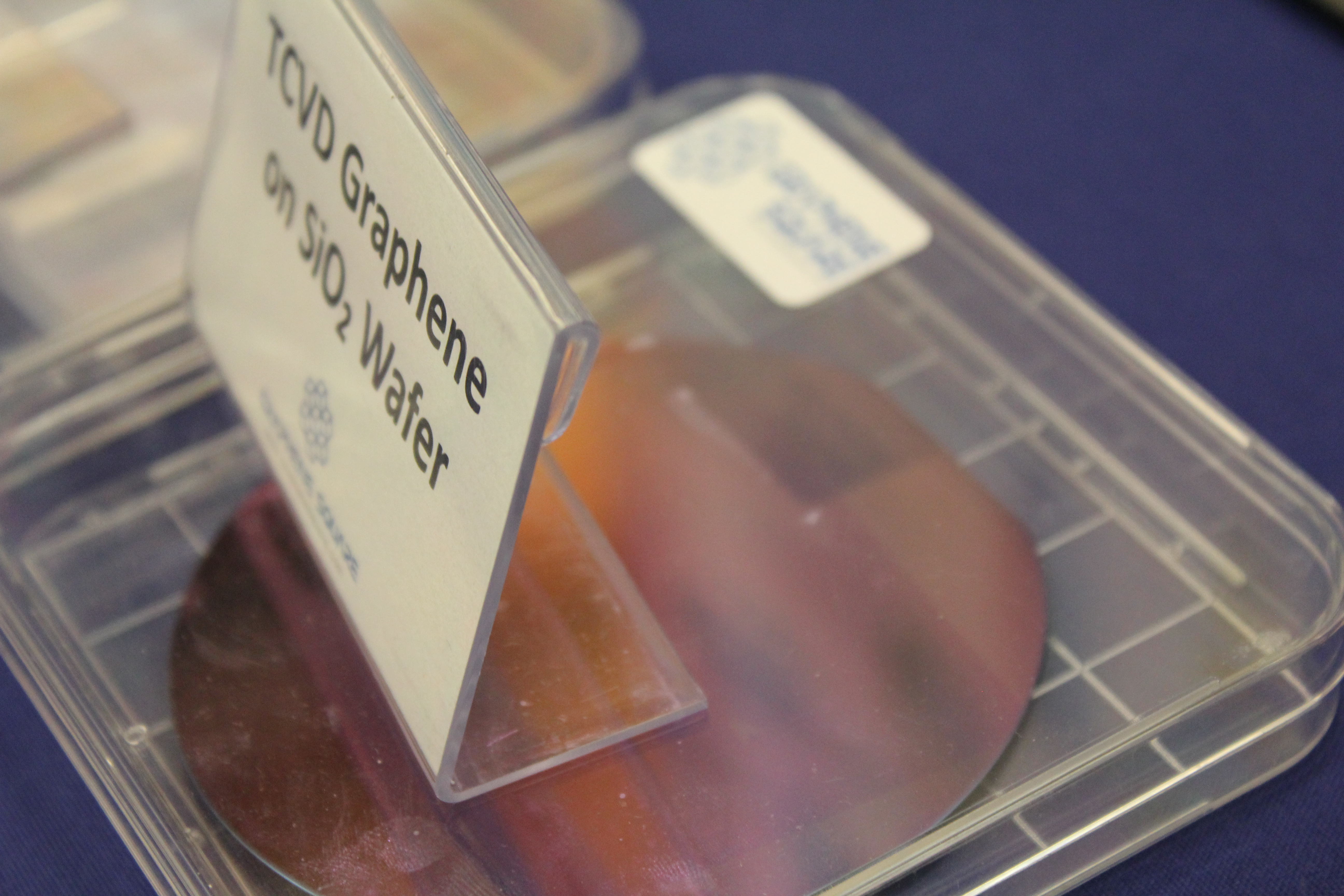In the fast-paced world of investing, it’s important to keep an eye on emerging industries that have the potential for exponential growth. One such industry is graphene, a material that has captivated scientists, engineers, and investors alike with its extraordinary properties and wide-ranging applications.
If you’re interested in learning more about graphene companies publicly traded and how to invest in this exciting field, you’ve come to the right place.
What is Graphene?
Graphene, a single layer of carbon atoms arranged in a two-dimensional lattice, is an extraordinary material with immense potential for transforming various industries. Its unique structure and properties make it incredibly thin yet remarkably strong, flexible, and conductive.
This wonder material has captured the attention of scientists, researchers, and innovators worldwide.
With its exceptional strength-to-weight ratio and high electrical conductivity, graphene holds promise for revolutionizing electronics. Its flexibility allows it to be integrated into flexible displays, wearable technology, and even foldable smartphones.
In the field of energy storage, graphene-based batteries have the potential to offer significantly higher energy density and faster charging times compared to traditional lithium-ion batteries.
Moreover, graphene’s biocompatibility and excellent mechanical properties make it a game-changer in healthcare applications. Researchers are exploring its potential in drug delivery systems, tissue engineering scaffolds, biosensors for disease detection, and even in creating artificial organs.
Beyond electronics and healthcare, graphene also has implications in aerospace technology. Its lightweight nature could contribute to fuel efficiency in aircraft by reducing their weight while maintaining structural integrity. Additionally, its superior thermal conductivity properties can enhance heat dissipation in spacecraft components.
The global market for graphene-based products is projected to reach billions of dollars in the coming years as more industries recognize its transformative capabilities. The commercialization of this revolutionary material presents an incredible opportunity for investors seeking to capitalize on its potential applications.
What are some good properties of graphene?
Graphene, a single atom-thick layer of carbon atoms arranged in a hexagonal lattice, possesses exceptional properties that make it highly desirable for numerous applications. It is incredibly strong, with a tensile strength 200 times greater than steel.
Graphene also exhibits excellent electrical conductivity, allowing it to efficiently carry electric current without resistance. Its flexibility enables integration into various materials without compromising structural integrity. Additionally, graphene is virtually transparent and can transmit over 97% of light across the spectrum.
These properties position graphene as an ideal candidate for advanced materials used in electronics, energy storage, biomedical devices, and other cutting-edge applications. As researchers continue to explore its potential, graphene holds the promise of revolutionizing technology and driving innovation in diverse fields.
What is the difference between graphene and graphite?
Graphene and graphite, both forms of carbon, have significant differences in their structure and properties. Graphene consists of a single layer of carbon atoms arranged in a hexagonal lattice, while graphite is composed of multiple layers of graphene stacked on top of each other.
Graphene’s two-dimensional nature gives it exceptional strength, electrical conductivity, thermal conductivity, and optical transparency. In contrast, graphite’s three-dimensional layered structure provides practical uses such as lubrication and electrode materials but lacks the extraordinary characteristics exhibited by graphene.
| Property | Graphene | Graphite |
|---|---|---|
| Dimensionality | 2D | 3D |
| Strength | High | Moderate |
| Electrical Conductivity | High | Moderate |
| Thermal Conductivity | High | Moderate |
| Optical Transparency | Transparent | Opaque |
| Applications | Electronics, energy storage, biomedical devices | Lubricants, electrodes in batteries |
Note: The table summarizes key differences between graphene and graphite in terms of their properties and applications.
Private Graphene Companies
Several private graphene companies are leading the way in research and development, revolutionizing industries worldwide. Grolltex specializes in high-quality graphene films for sensors, batteries, and flexible electronics. Versarien focuses on innovative materials for energy storage, thermal management, and composites.
Haydale enhances graphene’s performance in composites, conductive inks, and coatings. These companies continue to push boundaries and make groundbreaking advancements with graphene technology, transforming industries across the globe.
| Company | Focus Areas |
|---|---|
| Grolltex | Sensors, Batteries, Flexible Electronics |
| Versarien | Energy Storage, Thermal Management |
| Haydale | Composites, Conductive Inks, Coatings |
As these private companies explore the full potential of graphene and unlock new applications, the possibility of revolutionizing various sectors becomes increasingly apparent.
Investing in Graphene Companies: Opportunities and Risks (Updated 2023)
Investing in publicly traded graphene companies offers exciting potential rewards. The demand for graphene-based products is growing, creating opportunities for investors. Graphene’s disruptive capabilities can lead to breakthrough technologies and innovations.
However, investing in emerging industries like graphene carries risks due to market volatility and regulatory challenges. Thorough research and staying informed are essential for making informed investment decisions in this sector.
How to Evaluate a Graphene Company for Investment Purposes
When considering investing in a graphene company, it is essential to conduct a thorough evaluation to make informed decisions. This evaluation involves assessing various aspects of the company’s financial health, management team and research capabilities, as well as market opportunities and competitive advantage.
By examining these key areas, investors can gain valuable insights into the potential for growth and success.
Firstly, evaluating the financial health of a graphene company is crucial. This involves analyzing balance sheets, income statements, and cash flow statements to understand the company’s profitability, liquidity, and overall financial stability.
Additionally, assessing profitability ratios, liquidity ratios, and debt levels provides further insights into the company’s financial performance and its ability to meet short-term obligations.
Secondly, understanding the management team’s experience and expertise is vital. A strong leadership team with relevant industry experience increases the likelihood of successful execution. By examining their track record and qualifications, investors can gauge their ability to navigate challenges effectively.
Furthermore, assessing the company’s research capabilities, patents, and intellectual property portfolio can indicate its competitive edge within the graphene industry.
Next, evaluating market opportunities and competitive advantage is essential in determining long-term growth prospects. Understanding the target market size and growth potential allows investors to assess the demand for graphene-based products.
By analyzing competition within the industry – including competitors’ strengths, weaknesses, market share, and differentiation strategies – investors gain valuable insights into a company’s competitive advantage.
Investing in graphene companies can be both exciting and rewarding; however, it requires careful consideration of various factors.
Conducting thorough due diligence by evaluating financial health, management team expertise, research capabilities, market opportunities, and competitive advantage enables investors to make informed investment decisions in this rapidly evolving sector.
| Key Areas |
|---|
| Financial Health of a Graphene Company |
| Management Team & Research Capabilities |
| Market Opportunities & Competitive Advantage |
Investment Strategies for Graphene Companies
Investing in graphene companies requires careful consideration of the appropriate strategies. Two main approaches can be taken: a long-term investment approach and short-term trading strategies.
A long-term investment approach involves focusing on well-established graphene companies with proven track records. These companies have successfully commercialized graphene-based products and offer stability for long-term investments.
Additionally, diversifying investments across multiple graphene companies can help mitigate risks associated with individual company performance.
Short-term trading strategies involve capitalizing on market fluctuations and news events. Active traders can take advantage of short-term price movements driven by market sentiment, news releases, or technical indicators such as trend lines and support/resistance levels.
By adopting the right investment strategy based on your financial goals and risk tolerance, you can navigate the dynamic world of investing in graphene companies successfully.
Conclusion
Investing in publicly traded graphene companies offers vast commercial potential in a technological revolution. As industries adopt graphene-based products, the demand for this remarkable material is expected to rise exponentially.
However, investing in emerging industries like graphene comes with risks due to market volatility and regulatory uncertainties. Thoroughly evaluating financial factors and qualitative aspects of a company is crucial before making investment decisions.
[lyte id=’uqcyNSy3poc’]







